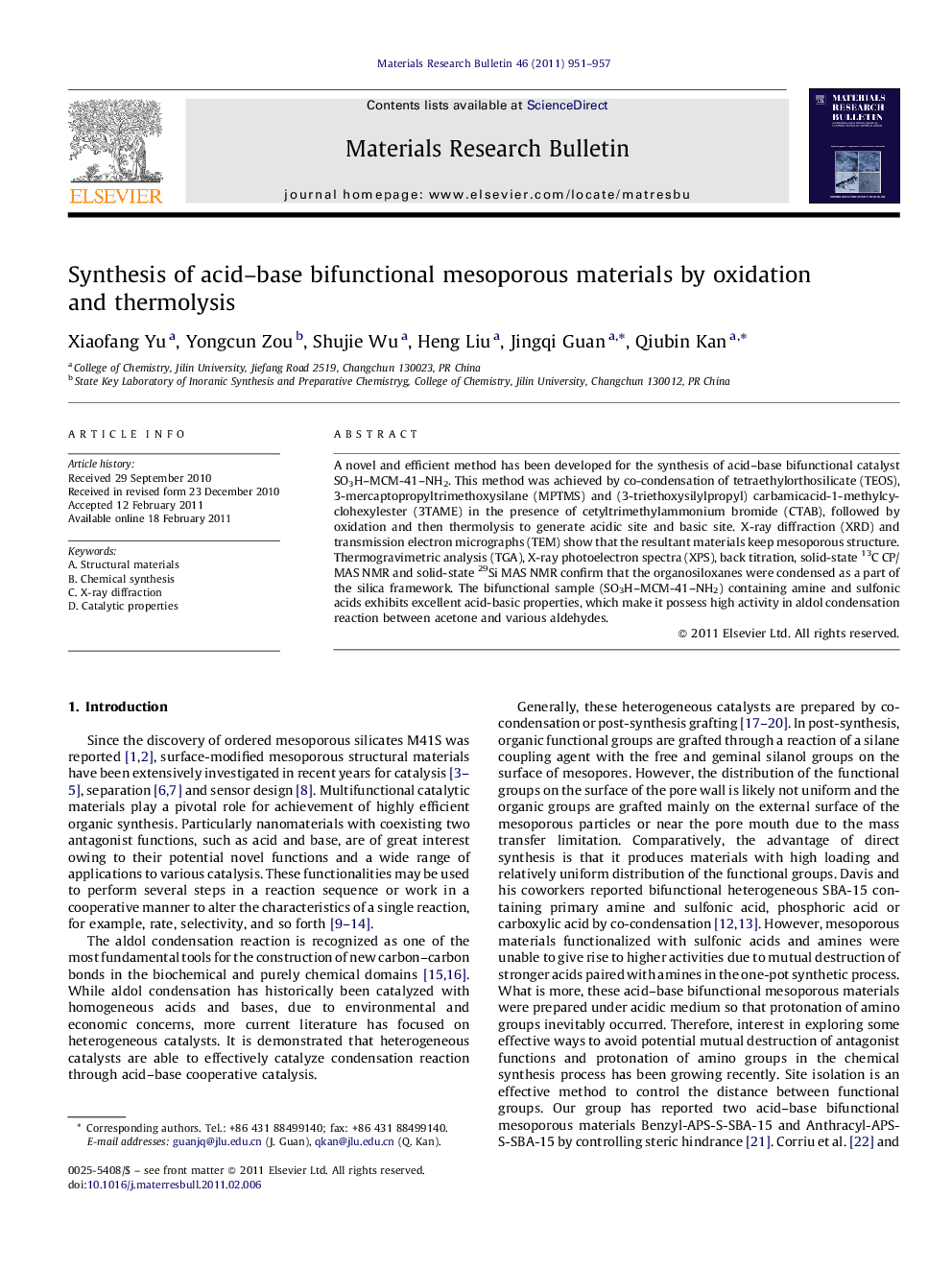| Article ID | Journal | Published Year | Pages | File Type |
|---|---|---|---|---|
| 1489465 | Materials Research Bulletin | 2011 | 7 Pages |
A novel and efficient method has been developed for the synthesis of acid–base bifunctional catalyst SO3H–MCM-41–NH2. This method was achieved by co-condensation of tetraethylorthosilicate (TEOS), 3-mercaptopropyltrimethoxysilane (MPTMS) and (3-triethoxysilylpropyl) carbamicacid-1-methylcyclohexylester (3TAME) in the presence of cetyltrimethylammonium bromide (CTAB), followed by oxidation and then thermolysis to generate acidic site and basic site. X-ray diffraction (XRD) and transmission electron micrographs (TEM) show that the resultant materials keep mesoporous structure. Thermogravimetric analysis (TGA), X-ray photoelectron spectra (XPS), back titration, solid-state 13C CP/MAS NMR and solid-state 29Si MAS NMR confirm that the organosiloxanes were condensed as a part of the silica framework. The bifunctional sample (SO3H–MCM-41–NH2) containing amine and sulfonic acids exhibits excellent acid-basic properties, which make it possess high activity in aldol condensation reaction between acetone and various aldehydes.
Graphical abstractA novel and efficient method has been developed for the synthesis of acid–base bifunctional catalyst. The obtained sample of SO3H–MCM-41–NH2 containing amine and sulfonic acids exhibits excellent catalytic activity in aldol condensation reaction.Figure optionsDownload full-size imageDownload as PowerPoint slideResearch highlights► Synthesize acid–base bifunctional mesoporous materials SO3H–MCM-41–NH2. ► Oxidation and then thermolysis to generate acidic site and basic site. ► Exhibit good catalytic performance in aldol condensation reaction between acetone and various aldehydes.
